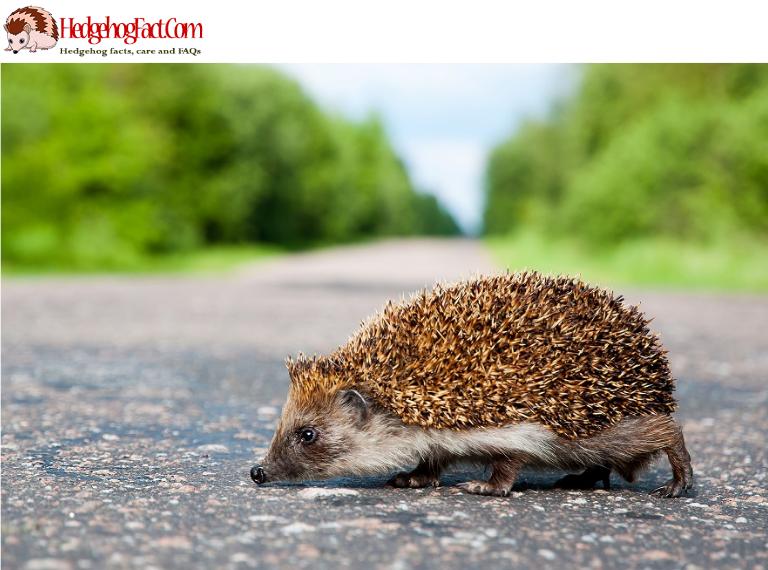Hedgehogs are spiny mammals belonging to the subfamily Erinaceinae, and they are found in different parts of the world. In Things You May Not Know About Hedgehogs In Europe, we will explore the natural habitat, behavior, and threats to the European hedgehog.
Natural Habitat of the European Hedgehog
The European hedgehog is a generally common and widely distributed species that can survive across a wide range of habitat types. These habitats include woodlands, grasslands, and even urban areas like gardens and parks.
They are most commonly associated with Britain, but they are also found in Italy, Scandinavia, northwest Russia, and other parts of Europe. Hedgehogs are not found in every country in Europe, but they can be found at elevations up to 2,000 m.

The European Hedgehog, also known as Erinaceus europaeus, is native to Europe, including parts of western Asia and North Africa. Their natural habitat includes a range of environments such as woodland, grassland, farmland, hedgerows, parks, and gardens. They prefer areas with plenty of undergrowth and cover, where they can find food and shelter.
In the wild, European Hedgehogs will typically make nests in hollows or under dense vegetation, such as shrubs or hedgerows. They are also known to use man-made structures such as compost heaps, piles of leaves, or even garden sheds as shelter.
Overall, European Hedgehogs are adaptable and can thrive in a variety of environments, as long as they have access to food and shelter. However, their populations are declining due to habitat loss and other factors, making conservation efforts important to their survival.
The behavior of the European Hedgehog
Hedgehogs are nocturnal and usually active at night, although they may come out during the day in cooler weather. They are solitary creatures and spend most of their time foraging for food. The European hedgehog is an insectivore, and their diet consists mainly of insects such as beetles, caterpillars, and earthworms.
They may also eat small animals like snails, mice, and even small snakes and frogs. Hedgehogs are known for their distinctive spines, which are made of keratin and are used for protection from predators. When threatened, they roll into a tight ball with their spines facing outwards.

The European Hedgehog is a nocturnal, solitary mammal that is active primarily at night. Here are some of the key behaviors associated with this species:
Diet: Hedgehogs are omnivorous and feed on a variety of foods, including insects, earthworms, slugs, snails, frogs, and small mammals. They also eat fruit, berries, and other plant matter.
Nesting: Hedgehogs will create nests in a variety of locations, including under hedges, in piles of leaves or logs, and in dens or burrows. They will typically line their nests with leaves and grass.
Hibernation: Hedgehogs hibernate during the winter months when food is scarce. They will typically find a sheltered spot and build a nest to sleep in. During this time, their heart rate and body temperature drop to conserve energy.
Defense Mechanisms: When threatened, hedgehogs will roll into a tight ball, exposing their sharp spines to deter predators. They may also hiss or grunt to warn off potential predators.
Mobility: Hedgehogs are good climbers and swimmers, and can move relatively quickly on land.
Reproduction: Hedgehogs typically mate in the spring, and females give birth to litters of four to six young after a gestation period of around 35 days.
Overall, the European Hedgehog is an adaptable and resourceful animal that exhibits a range of interesting behaviors. However, the species faces a range of threats, and conservation efforts are needed to protect their populations.
Threats to the European Hedgehog
Hedgehogs are under threat due to a loss of habitat and food, resulting in declining reproduction rates, which has led to their inclusion on endangered species lists. In addition, hedgehogs are at risk from road traffic, as they often roam large distances in search of food and mates. Other threats to the European hedgehog include predation by badgers and foxes, as well as garden tools like strimmers and lawnmowers.

The European Hedgehog, like many other wildlife species, faces a range of threats that have contributed to population declines across their range. Here are some of the most significant threats:
Habitat Loss and Fragmentation: The destruction and fragmentation of their natural habitats due to land-use changes, urbanization, and agricultural practices are one of the primary threats to hedgehogs.
Intensive Agriculture: The widespread use of pesticides and other chemicals in farming practices can reduce the availability of food for hedgehogs and may even poison them.
Traffic: Hedgehogs are frequently killed or injured on roads, especially at night when they are most active.
Predators: Hedgehogs have natural predators, including foxes, badgers, and birds of prey, and domestic animals such as cats and dogs.
Climate Change: Changes in weather patterns and temperature may affect the availability of food for hedgehogs and their ability to hibernate.
Human Activities: Hedgehogs can become entangled in garden netting, caught in garden bonfires, and injured by garden tools.
Overall, the combination of these threats, along with other factors such as disease and predation, has contributed to a significant decline in European Hedgehog populations in recent years. Conservation efforts focused on habitat restoration, reducing pesticide use, and raising awareness about the importance of hedgehogs can help protect this iconic species.
Conclusion
The European hedgehog is a well-known and widely distributed species native to Europe. They are adapted to a wide range of habitat types and have distinctive spines used for protection from predators. However, hedgehogs are under threat from a loss of habitat and food, as well as predation and road traffic. Conservation efforts are necessary to ensure the continued survival of this iconic species.





